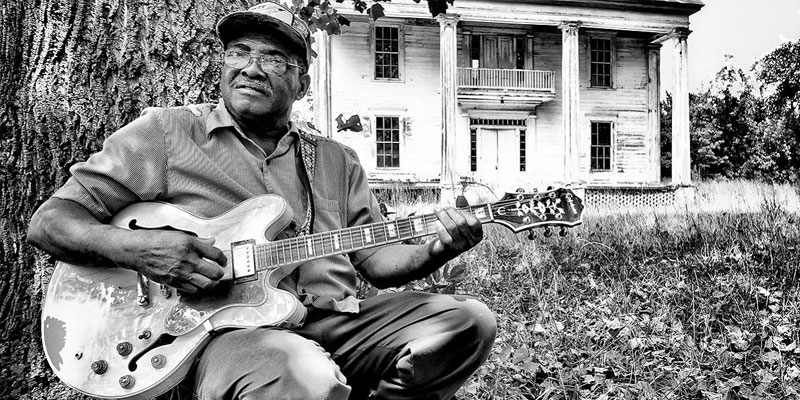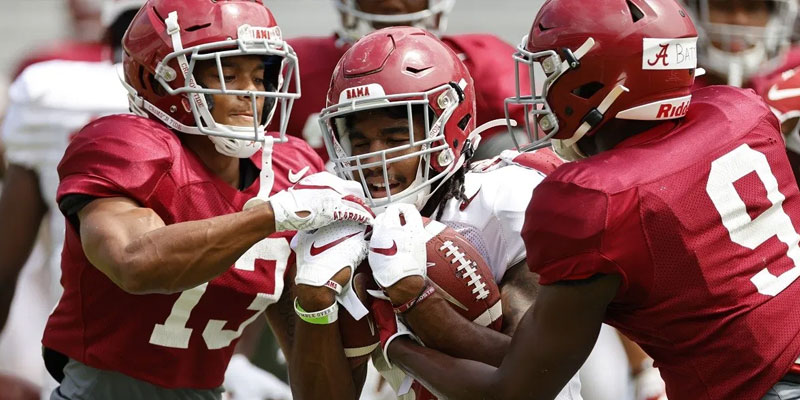A new, one-hour documentary digs down deep into Alabama’s African American inspired blues tradition, one less well-known than its Mississippi counterpart, but equally rich.
Alabama Black Belt Blues is produced by One State Films in partnership with Alabama Public Television (APT). It premiered on APT stations Friday, Oct. 23, and will be rebroadcast at 3 p.m. Sunday, Oct. 25.
The film is produced and directed by Alabama filmmaker Robert Clem. It is his eighth feature documentary about Alabama, its history and culture.
His latest details the state’s African American blues tradition, from the days of slavery to the 1930s and ’40s, when John and Alan Lomax recorded hundreds of songs for the Library of Congress with the aid of Sumter County folklorist Ruby Pickens Tartt; and on to the present day.
Alabama’s blues tradition is centered in the state’s Black Belt region, which was the heart of the antebellum cotton-growing industry – fueled by the labor of enslaved Blacks. According to a description provided by APT, the music “is more rural than the well-known Mississippi Delta blues and, in some sense, closer to the original source.”
The film deploys slave narratives, archival blues recordings and the recorded music of contemporary Black blues artists to explore the role the music has played in the region from slavery until current times.
Among the musicians heard in the film are Vera Hall, Dock Reed, Willie King and “Birmingham” George Conner, who was born and raised in the Black Belt. Other featured musicians include Jock Webb, B.J. Reed, Michael Carpenter, Little Lee and the Midnight Band, B.J. Miller, teenage blues phenomenon Nigel Speights, and Alabama Blues Hall of Famers Clarence “Bluesman” Davis, Sam Frazier and Earl “Guitar” Williams.
The film includes archival recordings, and live performances filmed at Black Belt juke joints in Boligee, Panola and Union, and at the famed Red Wolf Lounge in Birmingham. The film also pays a visit to Gip’s Place, the juke joint founded in Bessemer by the late Black Belt native Henry “Gip” Gipson.
Among those discussing the state’s blues culture in the film are Tina Naremore Jones, founding director of the Center for the Study of the Black Belt at the University of West Alabama; folklorist Kern Jackson, head of African American studies at the University of South Alabama; and singer B.J. Reed of the Alabama Blues Project. Others talking about the blues in the documentary are Jock Webb, Clarence Davis, Little Lee, B.J. Miller, Roger Stephenson of the Magic City Blues Society and the late Willie King.
The documentary includes archival film of Black Belt Alabama from the 1920s into the early 2000s and a collection of photos taken in Alabama’s Black Belt in the 1950s by writer, historian and jazz expert Fred Ramsey. Some of the photos appeared in Ramsey’s book, “Been Here and Gone,” but have never appeared in a film until now.
Clem, the film’s producer and director, is a Birmingham native and graduate of Birmingham-Southern College and New York University film school. He also has been a fellow at the Sundance Institute. His other Alabama-inspired documentaries include the 1997 Big Jim Folsom: The Two Faces of Populism; John Patterson: In the Wake of the Assassins (2007); The Jefferson County Sound (2012); and The Two Worlds of William March (2017), all of which have been broadcast on APT. Clem’s most recent film, How They Got Over, documents the history of African American gospel quartet music, starting with the Alabama Blind Boys and other native Alabamians who achieved quartet fame.
Funding for Alabama Black Belt Blues comes from the Daniel Foundation of Alabama, Chapman Foundation, Alabama State Council on the Arts, the Paul & Alma Fischer Education Endowment and the Alabama Humanities Foundation.
(Courtesy of Alabama NewsCenter)













